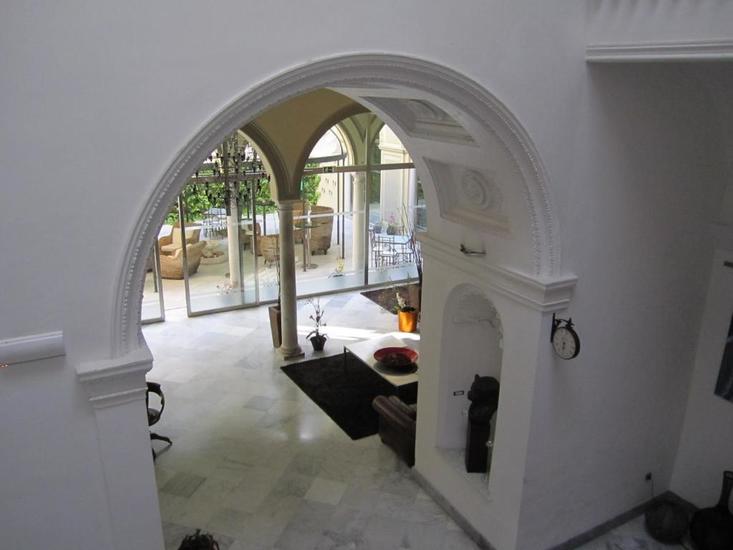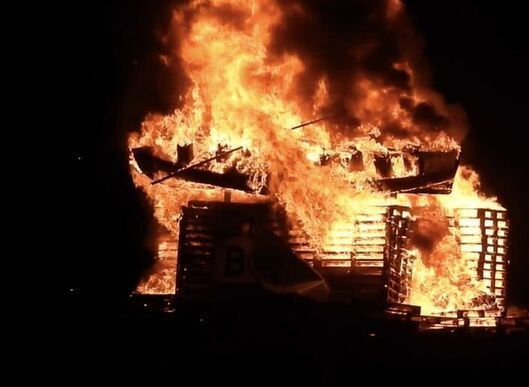Lucy McDiarmid.
PHOTO: XANTHE ELBRICK
In 2015, the Irish Echo asked Lucy McDiarmid about her book “Poets and the Peacock Dinner: the literary history of a meal” (Oxford University Press). And a few years before that, we talked with her about “The Irish Art of Controversy.” Now the Marie Frazee-Baldassarre Professor of English at Montclair University in New Jersey returns yet again to an early-20th Century Irish theme with “At Home in the Revolution: what women said and did in 1916,” which is published by the Royal Irish Academy. For further information about McDiarmid and her work go to: lucymcdiarmid.com.
Why did you write a book about women and 1916?
I wrote this book because I loved the women's stories. There was one story in particular that caught my imagination, a story Kathleen Clarke tells in her autobiography “Revolutionary Woman.”
On May 2, 1916, the day before her husband Tom Clarke was executed, Kathleen, was home when the British military came to raid her house. At that moment she had a guest, someone she refers to only as "an old lady." Clarke heard the military approaching in their lorries, and she guessed what was about to happen. She had a large sum of money that had to be hidden quickly, and she didn't want to hide it in an obvious place like the garden. She looked at the old lady, and she got an idea. She began unbuttoning the lady's "bodice," and (as she writes) they both began shaking as she stashed all the money, several thousand pounds, on the woman's body. She was just buttoning the last button when she heard the rifles rapping at the door. Clarke was pleased with the hiding place, because she says of the old lady, "Her ample bust was not noticeably increased by the added bulk." And the money was safe; it was never discovered by the military, though Clarke's grandniece tells me that Clarke had some trouble getting it back from the old lady and required the help of a priest to reappropriate the money.
I always loved that story, because it was so little known and yet so important, because that large sum of money was in fact the Volunteer Dependants' fund. It had been acquired specifically to support the families of the men who were killed in the Rising or imprisoned afterwards. In effect, it was the national treasury of a nation that was just then coming into being. But the story involved intimate activities, one woman unbuttoning another woman's "bodice," and dramatized a very gendered encounter, women alone in a house (there was also a maid, a young girl from the Aran Islands) invaded by quite belligerent British military. The story was entertaining and yet entirely serious, seemingly marginal but actually central to the continuity of the community of rebel families.
I read that autobiography back in the mid-1990s, when it was published (long after Kathleen Clarke's death), and gradually I became aware of more women's memoirs of 1916. And then a few years ago the Bureau of Military History put on-line all its wonderful witness statements, collected by both women and men who had been politically active between 1913 and 1923. Those statements had good stories too, and I became eager to read them all and write a book using them to analyze women's activities during the Easter Rising.
Lucy Schneider, the author’s mother, was pictured with Consul General Barbara
Jones at the March 1 launch of “At Home in the Revolution” at the Irish Consulate in New York.
PHOTO: PETER MCDERMOTT
How is your book distinct from other books on women in 1916?
My book's primary materials are the women's own words, as recorded in their pension applications to the Irish government in the 1930s, their witness statements, diaries, letters, memoirs and autobiographies. What they found important, I found important: I let their interests guide mine. And so I wrote not only about their work during the Rising -- as couriers, cooks, nurses, gunners, spies, carrying ammunition under cabbages or messages in their hair or money in their skirts -- but about their romances, the many ceilis they attended, their encounters with chivalrous Volunteers who wanted to prevent them from helping or violent British soldiers who strip-searched them, their friendships with other women, their arguments with their families, and the pleasure of the hot baths they finally got after weeks of revolutionary work.
Because my interest was women, I included Unionists as well as rebels, and why not? they were women also, and their roles also changed during the week of the Rising. They, too, took on more responsibilities, though always in an auxiliary role, as was the case with the rebel women.
In addition, my book takes up emotions as an important category for understanding the Rising. In the many records I read, I found that many people uttered the words "Thanks be to God I lived to see this day" on hearing that the Rising had begun. I also read about the intense mourning after the Rising, so intense that many people, men and women alike, wrote of that time, "I couldn't feel anything."
And finally, because I so loved the story about the "ample bust" that "was not noticeably increased," I decided to focus on what the sociologist Erving Goffman calls "small behaviors," small-scale gestures or seemingly insignificant conversations that revealed much that was ambiguous about the status of women in public space.
What are your favorite examples of these small gestures that tell us so much about women's status then?
More than I can tell here, but I'll mention two: the story of Catherine (Kate) Byrne, who kicked out the glass in a window of the General Post Office on Easter Monday morning and jumped into the GPO, landing on top of a Volunteer who first cursed her ("What the bloody hell are you doing here?") but then gave her work to do. She hadn't been allowed in the front, but she found another way in. That's one way women enter a male-dominated space.
Another such story is told by Mary McLoughlin, who went home in the middle of Easter Week to check in on her mother. Mrs. McLoughlin locked the fifteen-year-old Mary in her room so she could not return to the Rising, but Mary jumped out the window.
Women were eager to participate, and clearly they would jump through windows if they had to.
How do you think being an American affected the way you wrote this book?
I had no political agenda. I didn't feel the need to prove that the Rising was a dreadful mistake or a glorious patriotic event. I just wanted to analyze the way women wrote about it, to look at the strategies they evolved for working alongside men, either in rebel garrisons or Unionist households. I wanted to know how women thought. It used to be the case that when I tried to think how I would have acted or felt or thought in another era, I thought back through Jane Austen's characters. But now I think back through the Irish women of 1916: what would they have done?
As told to Peter McDermott











